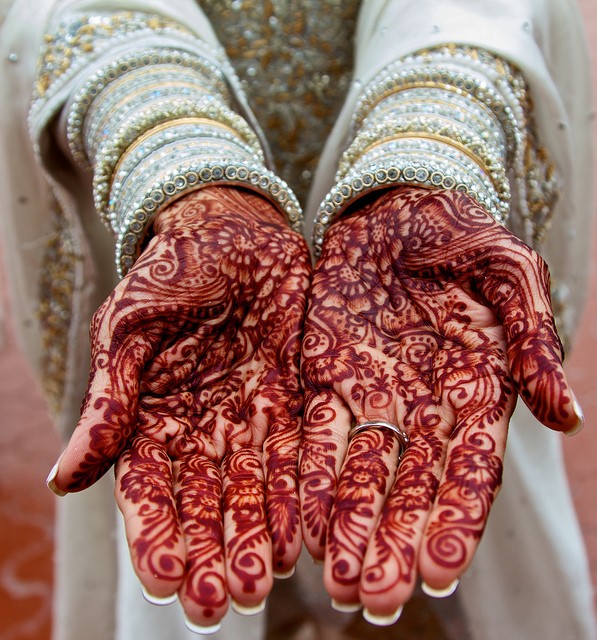FWP:
SETS
HENNA:
{18,4}
SHAME/HONOR: {3,5}
For background see S. R. Faruqi's choices. For more on Ghalib's unpublished verses, see the discussion in {4,8x}.
Well, something very abstract involving two multivalent i.zaafat constructions is going on in the first line. And just to create further complexities the line asserts that 'A is B', so that 'B is A' is also equally possible. Who could make head or tail of it, without an absurd degree of arbitrariness?
Under the circumstances, we have to be grateful for the relative clarity and simplicity of the second line. It does seem safe to say that the beloved is holding, in her red-stained hand, a blob of blood that once was the lover's heart. The beloved's hand is red-stained because it is smeared with blood, or henna, or both; on the nature and effects of henna, see {18,4}. This heart-blob is 'naked' because it's been removed from the breast that once contained it, and because the beloved's little hand isn't able to conceal it. (On Ghalib's remarkably consistent positioning and use of 'naked' [((uryaa;N], see {6,1}.)
Taking both lines together, it seems safe to say that the first line is a cause, or an effect, or a general principle, of the second line. But the interpretive possibilities for it still remains maddeningly vague and obscure. Just consider the word sharm alone-- is this 'shame' in the sense of 'disgrace, humiliation', or in the sense simply of a commendable 'bashfulness, modesty'? It's easy to imagine variant readings involving the henna/blood on the beloved's hands and the question of whether she should feel any kind of (guilty or modest) 'shame' about this. For what exactly is the shame 'of' loveliness/grace? (A shame identical to it, a shame felt by it, a shame felt about it, etc., are all possibilities.) It's not at all clear whether the line would approve or disapprove, in either case. And then, compare {18,4}, in which the very use of henna is a cause of rusvaa))ii . This verse is a Rube Goldberg contraption with a few too many parts, and no really compelling way to put them all together. Still, that second line-- it's hard to look away from it.

Asi:
Oh heedless one, loveliness/grace ought to show shame, since its takalluf is creating the equipment for disgrace. Through takalluf you apply henna. And that henna-filled hand is saying that you have shed the blood of the heart, and the world is seeing it. This henna-stained condition, by making 'naked' the heart's being turned to blood, is disgracing you.
== Asi, p. 233